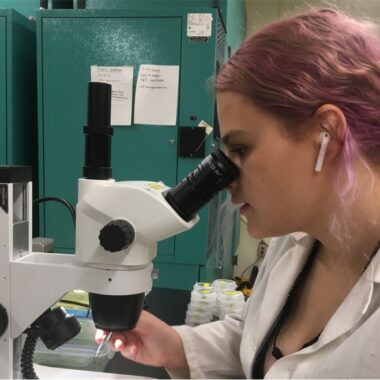
The two-spotted spider mite (Tetranychusurtichae)is a serious pest of greenhouse and field crops in Canada, damaging plants by feeding on the contents of leaf cells. Spider mites produce silk and use it for protection, movement, and communication.
Research Question: how do spider mites choose where to feed and reproduce?
Hypothesis: mites respond to chemical cues produced by conspecifics, which indicate that a microhabitat will be suitable and provide safety from predators.
Methods & Results: we gave mites a choice between two sides of a bean leaf with chemical cues left by other mites present or absent. We are now using chemistry and electrophysiology to investigate the chemicals associated with silk and feces and determine which compounds mites detect and respond to.
Why it matters: this research will help us understand chemosensation and movement decisions in spider mites, helping to inform and implement more precise and effective pest management strategies.


 Acadia University
Acadia University